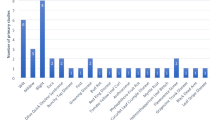Abstract
Diseases in agricultural products cause significant decrease on harvest efficiency and economic values of the products, early detection of diseases can prevent this loss. The development of artificial intelligence has brought its use in the field of agriculture. These practices have facilitated the work of farmers and increased productivity. Sugarcane is one of the agricultural crops with high economic value, and in this study, diseases in sugarcane leaves were classified by using deep learning methods. The dataset we use contains a total of 2521 images and there are 5 classes; healthy, mosaic disease, redrot disease, rust disease and yellow leaf disease. DenseNet121, one of the convolutional neural network (CNN) models, is applied to this dataset first, followed by the Vision Transformers (ViT) model, and finally the ViT + CNN combination is applied, and the results are compared. As a result of the observations, it is understood that the precisions of 92.87%, 93.34%, and 87.37%, respectively, were obtained.












Similar content being viewed by others
References
Murugeswari R, Anwar ZS, Dhananjeyan VR, Karthik CN (2022) Automated sugarcane disease detection using faster rcnn with an Android application. 6th International Conference on Trends in Electronics and Informatics (ICOEI). 1:1–7, https://doi.org/10.1109/ICOEI53556.2022.9776685
Li X, Li X, Zhang S, Zhang G, Zhang M, Shang H (2022) SLViT: shuffle-convolution-based lightweight Vision transformer for effective diagnosis of sugarcane leaf diseases. J King Saud Univ. https://doi.org/10.1016/j.jksuci.2022.09.013
Militante SV, Gerardo BD (2019) Detecting sugarcane diseases through adaptive deep learning models of convolutional neural network. IEEE 6th International Conference on Engineering Technologies and Applied Sciences (ICETAS) 1:1–5, https://doi.org/10.1109/ICETAS48360.2019.9117332
Hernandez AA, Bombasi JL, Lagman AC, (2022) Classification of Sugarcane Leaf Disease using Deep Learning Algorithms. IEEE 13th Control and System Graduate Research Colloquium (ICSGRC), 1:47–50, https://doi.org/10.1109/ICSGRC55096.2022.9845137
Alencastre-Miranda M, Johnson RM, Krebs HI (2021) Convolutional neural networks and transfer learning for quality inspection of different sugarcane varieties. IEEE Trans Industr Inf 17(2):787–794. https://doi.org/10.1109/TII.2020.2992229
Daphal SD, Koli SM (2021) Transfer learning approach to sugarcane foliar disease classification with state-of-the-art sugarcane database. Int Conf Comput Intell Comput Appl (ICCICA) 1:1–4. https://doi.org/10.1109/ICCICA52458.2021.9697312
Militante SV, Gerardo BD, Medina RP (2019) Sugarcane disease recognition using deep learning. IEEE Eurasia Conference on IOT, Communication and Engineering (ECICE) 1:575–578, https://doi.org/10.1109/ECICE47484.2019.8942690
Saavedra-Burbano RA, Marin-Hurtado JI (2020) Evaluation of deep learning architectures for the detection of rust in sugarcane crops. Virtual Symp Plant Omics Sci (OMICAS) 1:1–5. https://doi.org/10.1109/OMICAS52284.2020.9535653
Malik HS et al (2021) Computing disease recognition in sugarcane crop using deep learning. In: Kacprzyk J (ed) Advances in Intelligent Systems and Computing. Springer, Singapore, pp 189–206
Sharma R, Kukreja V (2022) segmentation and multi-layer perceptron: an intelligent multi-classification model for sugarcane disease detection. Int Conf Decis Aid Sci Appl (DASA) 1:1265–1269. https://doi.org/10.1109/DASA54658.2022.9765191
Chen W, Ju C, Li Y, Hu S, Qiao X (2021) Sugarcane stem node recognition in field by deep learning combining data expansion. Appl Sci 11(18):8663. https://doi.org/10.3390/app11188663
Tamilvizhi T, Surendran R, Anbazhagan K, Rajkumar K (2022) Quantum behaved particle swarm optimization-based deep transfer learning model for sugarcane leaf disease detection and classification. Math Probl Eng 2022:3452413. https://doi.org/10.1155/2022/3452413
Grijalva I, Spiesman BJ, McCornack B (2023) Image classification of sugarcane aphid density using deep convolutional neural networks. Smart Agric Technol 3:100089. https://doi.org/10.1016/j.atech.2022.100089
Daphal SD, Koli, SM (2022), Sugarcane leaf disease dataset, Mendeley Data, V1 https://doi.org/10.17632/9424skmnrk.1
Krizhevsky A, Sutskever I, Hinton GE (2012) ImageNet classification with deep convolutional neural networks. Adv Neural Inf Process Syst 25(2):1106–1114
Singh D, Taspinar YS, Kursun R, Cinar I, Koklu M, Ozkan IA, Lee H-N (2022) Classification and analysis of pistachio species with pre-trained deep learning models. Electronics 11(7):981. https://doi.org/10.3390/electronics11070981
Dosovitskiy A, Beyer L, Kolesnikov A, Weissenborn D, Zhai X, Unterthiner T, Dehghani M, Minderer M, Heigold G, Gelly S, Uszkoreit J, Houlsby N (2020) An image is worth 16x16 words: transformers for image recognition at scale. arXiv. https://doi.org/10.48550/arXiv.2010.11929
Nimsuk N, Paewboontra W (2021) Compact cnn model for classifying rose apple species and detecting their skin defects. 18th International Conference on Electrical Engineering/Electronics, Computer, Telecommunications and Information Technology (ECTI-CON). 1:136–139, https://doi.org/10.1109/ECTI-CON51831.2021.9454852
Huang G, Liu Z, Van Der Maaten L, Weinberger KQ (2017) Densely connected convolutional networks. Proc IEEE Conf Comput Vision Pattern Recogn 1:4700–4708. https://doi.org/10.48550/arXiv.1608.06993
Gupta A, Pawade P, Balakrishnan R (2022) Deep residual network and transfer learning-based person re-identification. Intell Syst Appl 16:200137. https://doi.org/10.1016/j.iswa.2022.200137
Haurum JB, Madadi M, Escalera S, Moeslund TB (2022) Multi-scale hybrid vision transformer and Sinkhorn tokenizer for sewer defect classification. Autom Constr 144:104614. https://doi.org/10.1016/j.autcon.2022.104614
Han K et al (2022) A survey on vision transformer. IEEE Trans Pattern Anal Mach Intell. https://doi.org/10.1109/TPAMI.2022.3152247
Alhawas N, Tüfekci Z (2022) The identification of red-meat types using the fine-tuned vision transformer and mobilenet models. Eur J Sci Technol 36:237–242
Kathamuthu ND, Subramaniam S, Le QH, Muthusamy S, Panchal H, Sundararajan SCM, Alruabie AJ, Zahra MMA (2022) A deep transfer learning-based convolution neural network model for COVID-19 detection using Computed tomography scan images for medical applications. Adv Eng Softw 175:103317. https://doi.org/10.1016/j.advengsoft.2022.103317
Author information
Authors and Affiliations
Corresponding author
Ethics declarations
Conflict of interest
The authors have no relevant financial or non-financial interests to disclose. The authors did not receive support from any organization for the submitted work.
Compliance with ethics requirements
This article does not contain any studies with human and animal.
Additional information
Publisher's Note
Springer Nature remains neutral with regard to jurisdictional claims in published maps and institutional affiliations.
Rights and permissions
Springer Nature or its licensor (e.g. a society or other partner) holds exclusive rights to this article under a publishing agreement with the author(s) or other rightsholder(s); author self-archiving of the accepted manuscript version of this article is solely governed by the terms of such publishing agreement and applicable law.
About this article
Cite this article
Öğrekçi, S., Ünal, Y. & Dudak, M.N. A comparative study of vision transformers and convolutional neural networks: sugarcane leaf diseases identification. Eur Food Res Technol 249, 1833–1843 (2023). https://doi.org/10.1007/s00217-023-04258-1
Received:
Revised:
Accepted:
Published:
Issue Date:
DOI: https://doi.org/10.1007/s00217-023-04258-1




